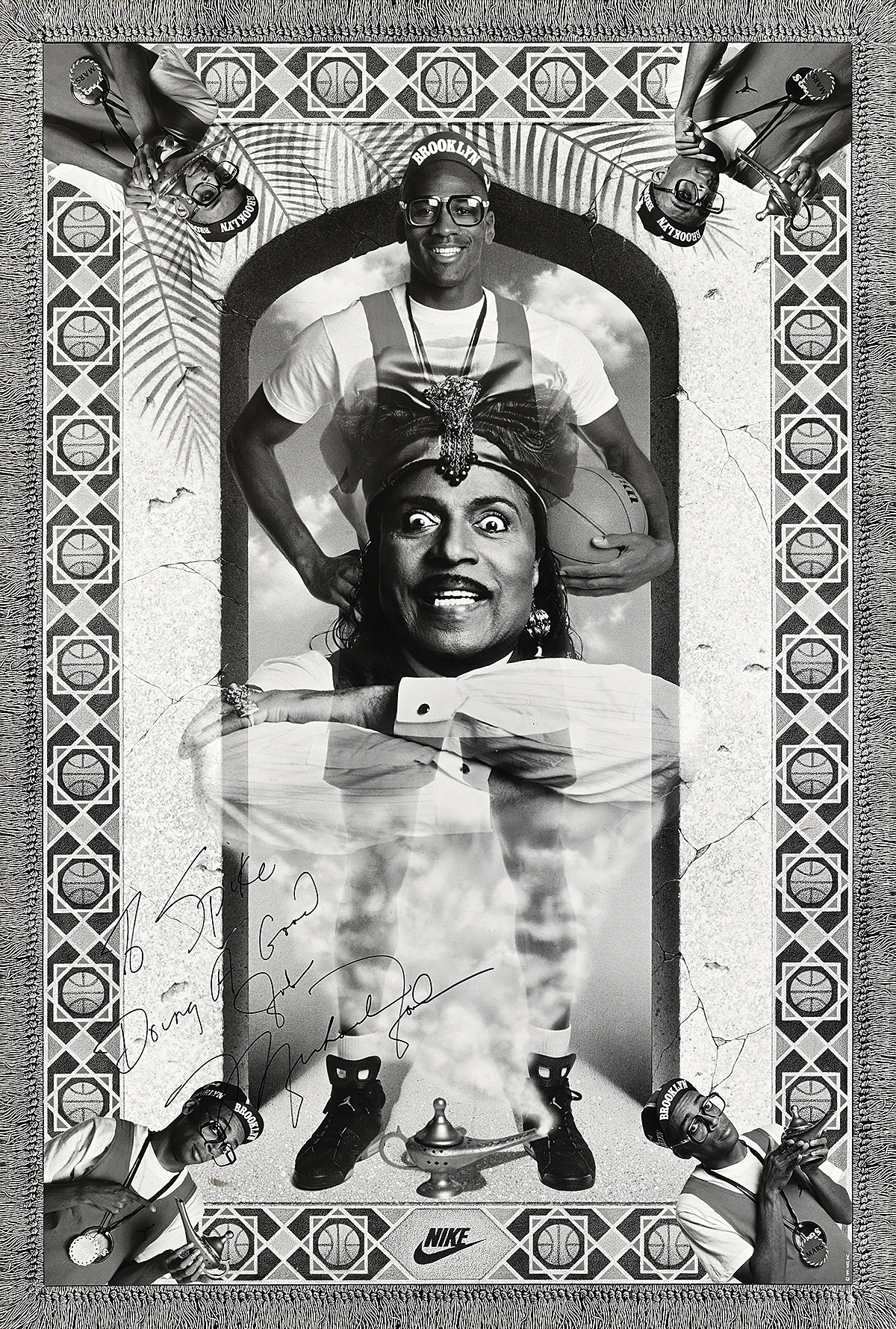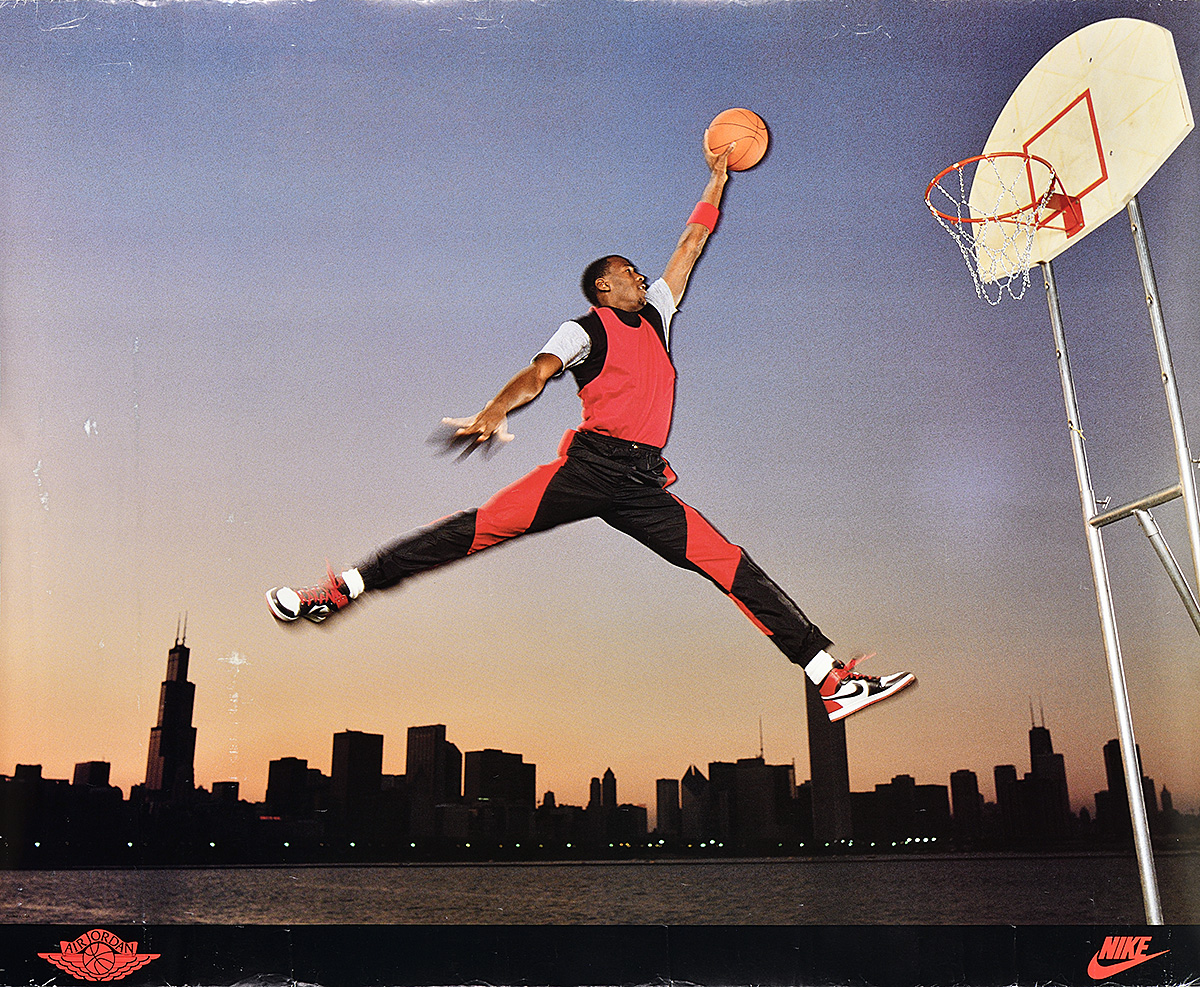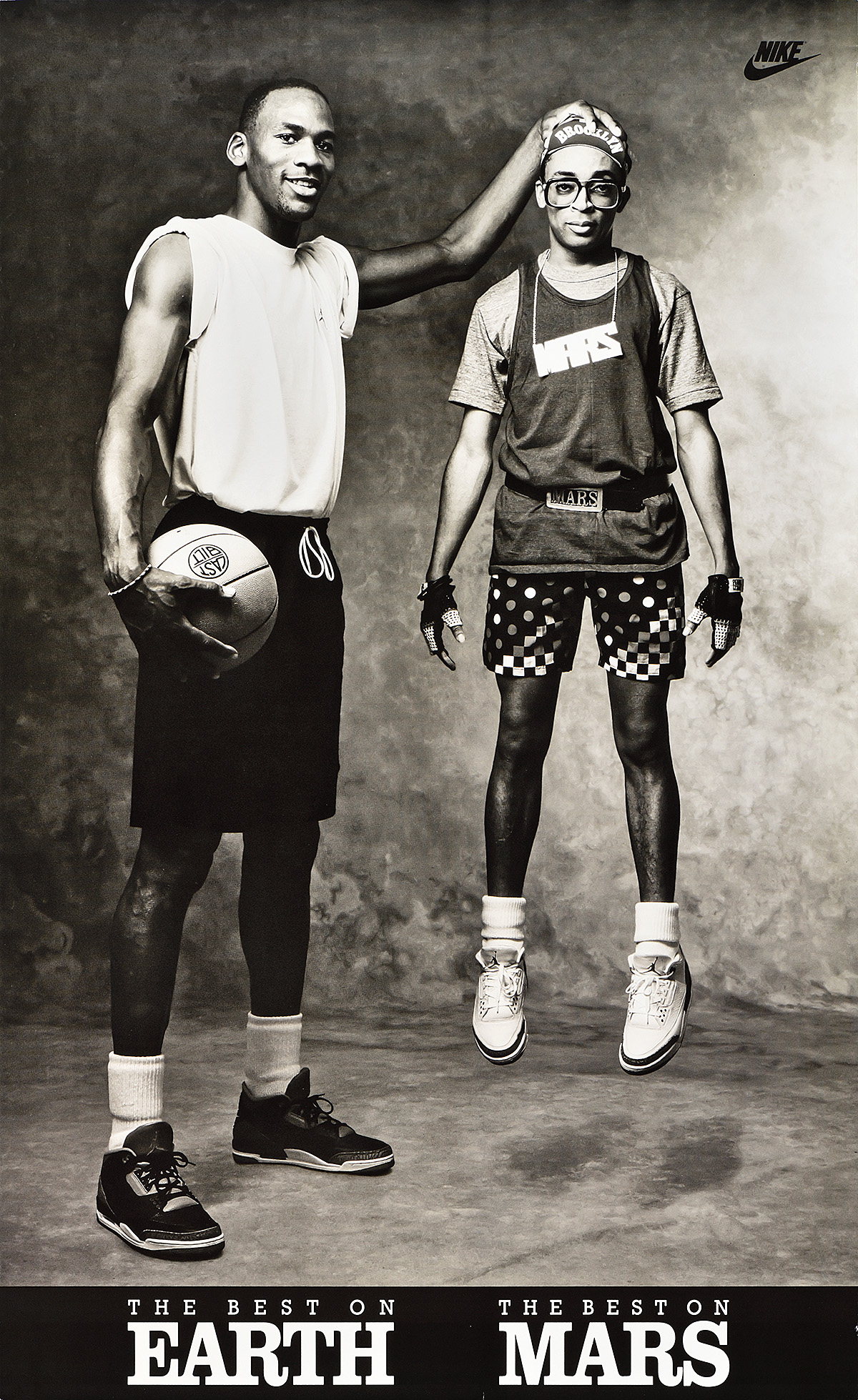
Nike and Afrofuturism
.Streetwear culture has become a mainstay of modern fashion in the last few years— just think about Hypebeast culture and logomania. But to fully comprehend the impact of streetwear on popular culture, we have to understand Afrofuturism as a tool of communication.
Ytasha L. Womack, author of Afrofuturism: The World of Black Sci-Fi and Fantasy Culture, explains Afrofuturism as “a way of looking at the future and alternate realities through a Black cultural lens…It is an artistic aesthetic, but also a method of self-liberation or self-healing…It intersects the imagination, technology, Black culture, liberation, and mysticism. An artistic aesthetic it bridges literature, music, visual arts, film, and dance.”
Just Frame It: How Nike Turned Sports Stars into Superheroes, the exhibition on view at Poster House through February 23, examines the various ways that Nike has framed professional athletes as superstars through styling in imagined realities. A striking example of this is the 1984 poster The Supreme Court, based on a photograph of a (predominantly Black) basketball team in judges’ robes on a basketball court. There is also the 1982 Iceman poster, showing basketball star George Gervin presiding over the competition from his throne of ice, and the 1994 poster Chocolate Thunder, featuring NBA player Darryl Dawkins holding his iconic shattered backboard and wearing a crop top emblazoned with the word “Lovetron,” his fantasy home planet from which he claimed to spread “interplanetary funk.” The whole idea relates to Nike’s habit of posing athletes in unlikely and otherworldly contexts like the superheroes in comic books.

Nike Air Jordan/Michael Jordan, 1985
To fully appreciate the influence of Nike’s marketing strategy on Black consumers, we must first talk about the Jumpman. The mythology that emerged from Nike’s positioning of Michael Jordan as a superhero was intentional from the beginning. After Jordan signed with Nike in 1984, arguably the most lucrative deal in sportswear history and the production of Air Jordans in 1985, Nike reinforced the notion that Michael Jordan had superhuman athletic abilities and that, by mere association, Air Jordan sneakers would magically confer the same special talents on those who wore them.
Take, for example, Nike’s multiformat campaign for Air Jordans in the ‘80s, which included a series of TV commercials and posters featuring film director Spike Lee in the character of Mars Blackmon from his debut film She’s Gotta Have It. Blackmon speaks directly to the sneaker-obsessed consumer that Nike was trying to reach when he asks Michael Jordan “What makes you the best player in the universe?…It’s got to be the shoes!”
This collaboration is also emblematic of the ways that Afrofuturism is focused on the intersection of music, media, and Black culture. Spike Lee’s films presented some of the earliest images of Afrofuturism on screen, and the integration of hip-hop and street style with social-justice issues was central to this aesthetic.

The Best on Earth/The Best on Mars, 1989
A Nike campaign from 1991 echoes the visual language of the Air Jordan series, but this time features Little Richard as a genie who grants Blackmon’s wish to “be like Mike.” Lee’s character is then transformed into Michael Jordan but still styled as Mars Blackmon.

Jordan Genie, 1991
Neither Nike nor Michael Jordan have always been at the forefront of social-justice movements. The company’s advertising in recent years has pivoted, however, from the fantastical depictions of Afrofuturism to the idea of activist-as-superhero, with athletes like Serena Williams and Colin Kaepernick emphasizing what can be accomplished in Nike shoes; this is not because they confer superhuman abilities, they suggest, but because they empower consumers to realize their full potential with the support—literally and figuratively—of the Nike brand. As Michael Jordan famously stated “It’s not about the shoes, it’s what you do in them.”
